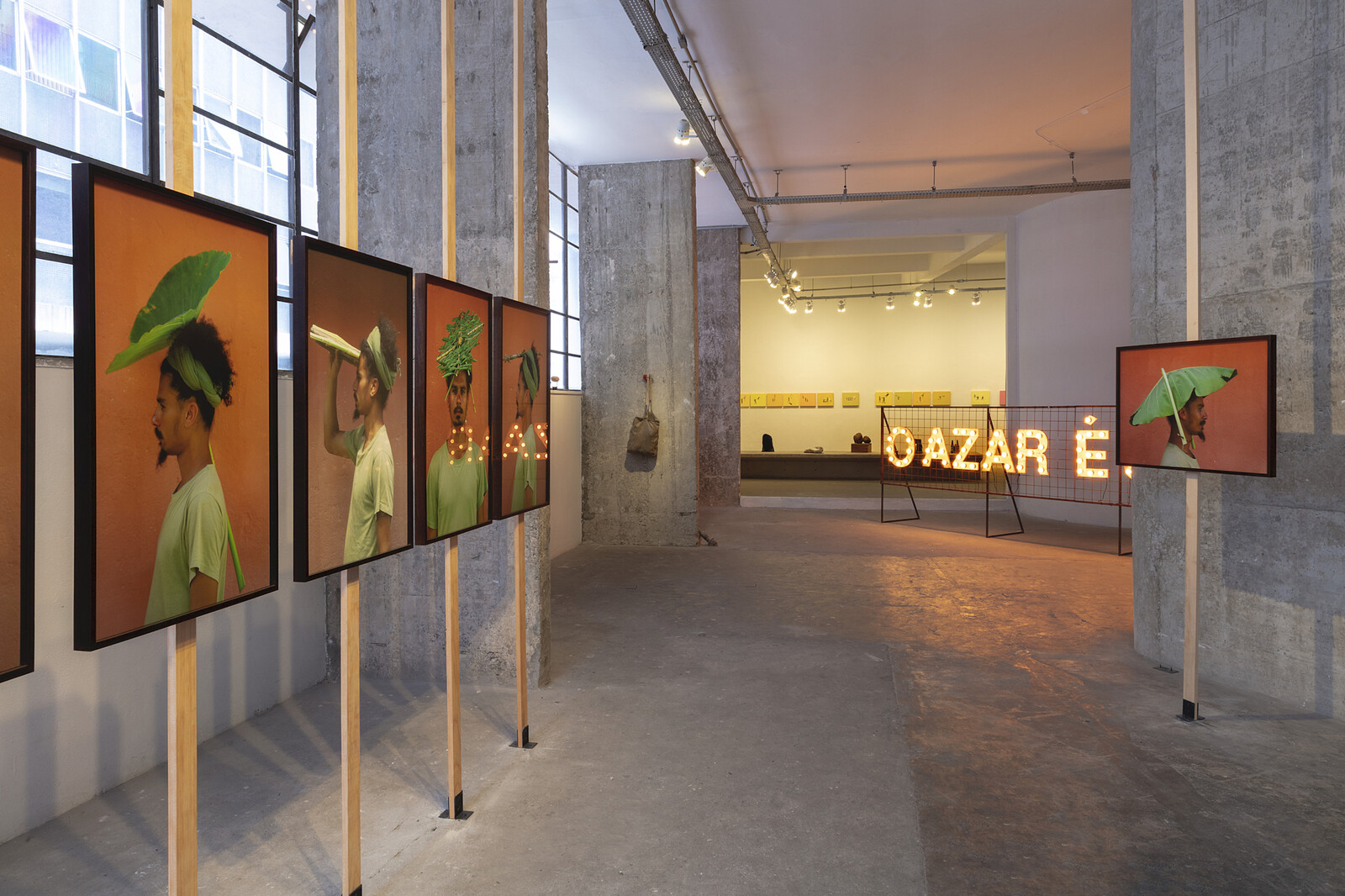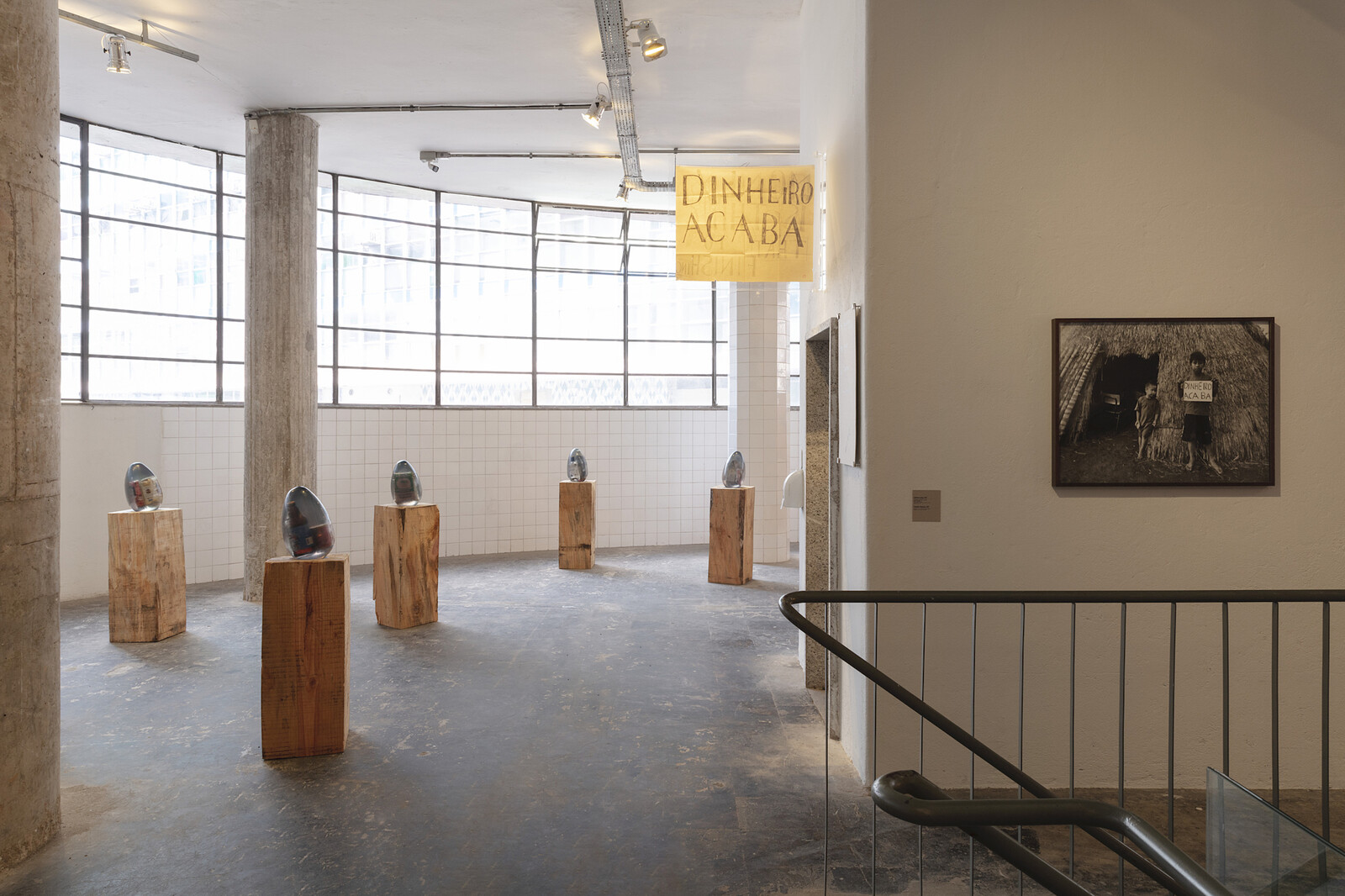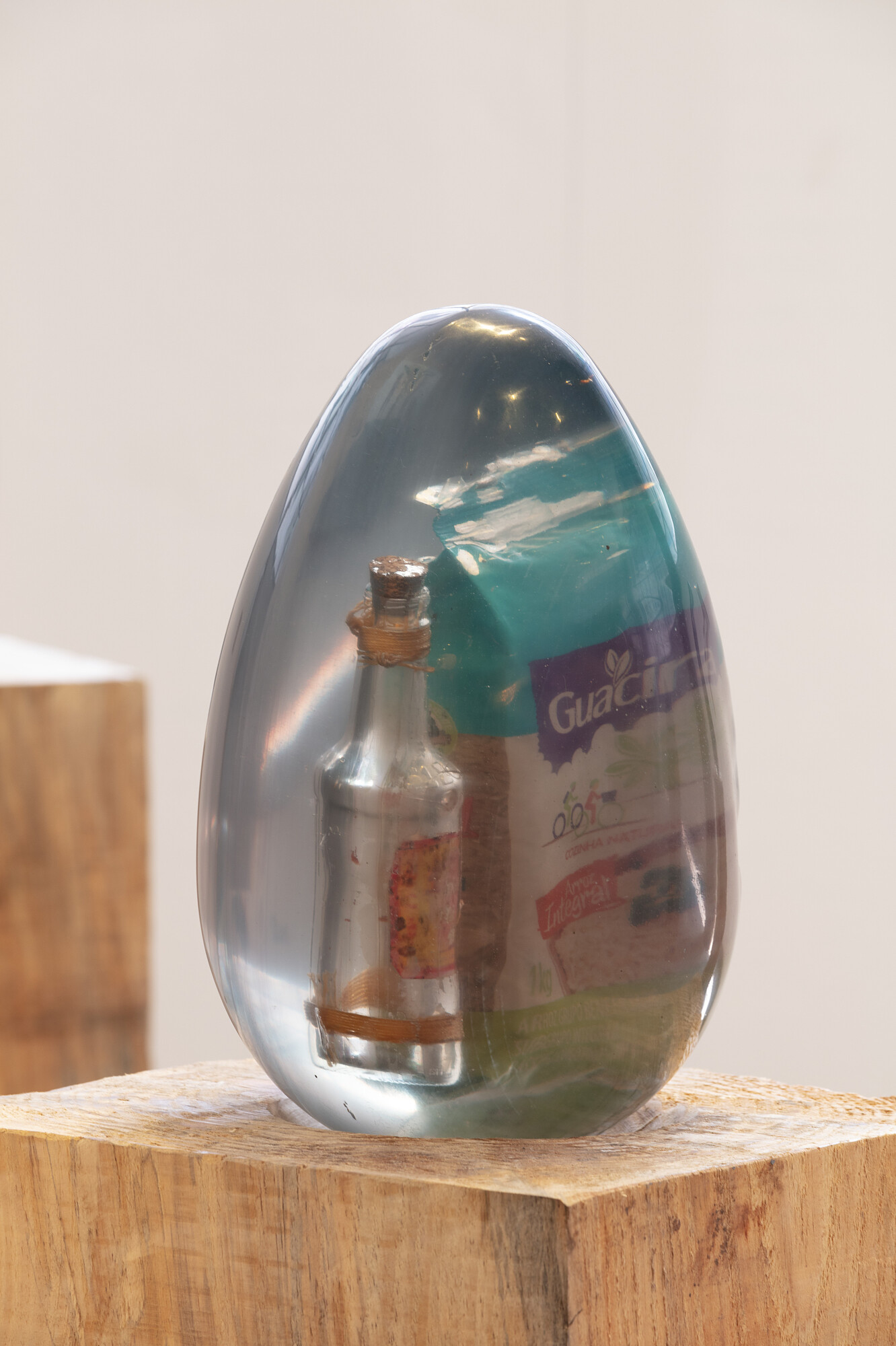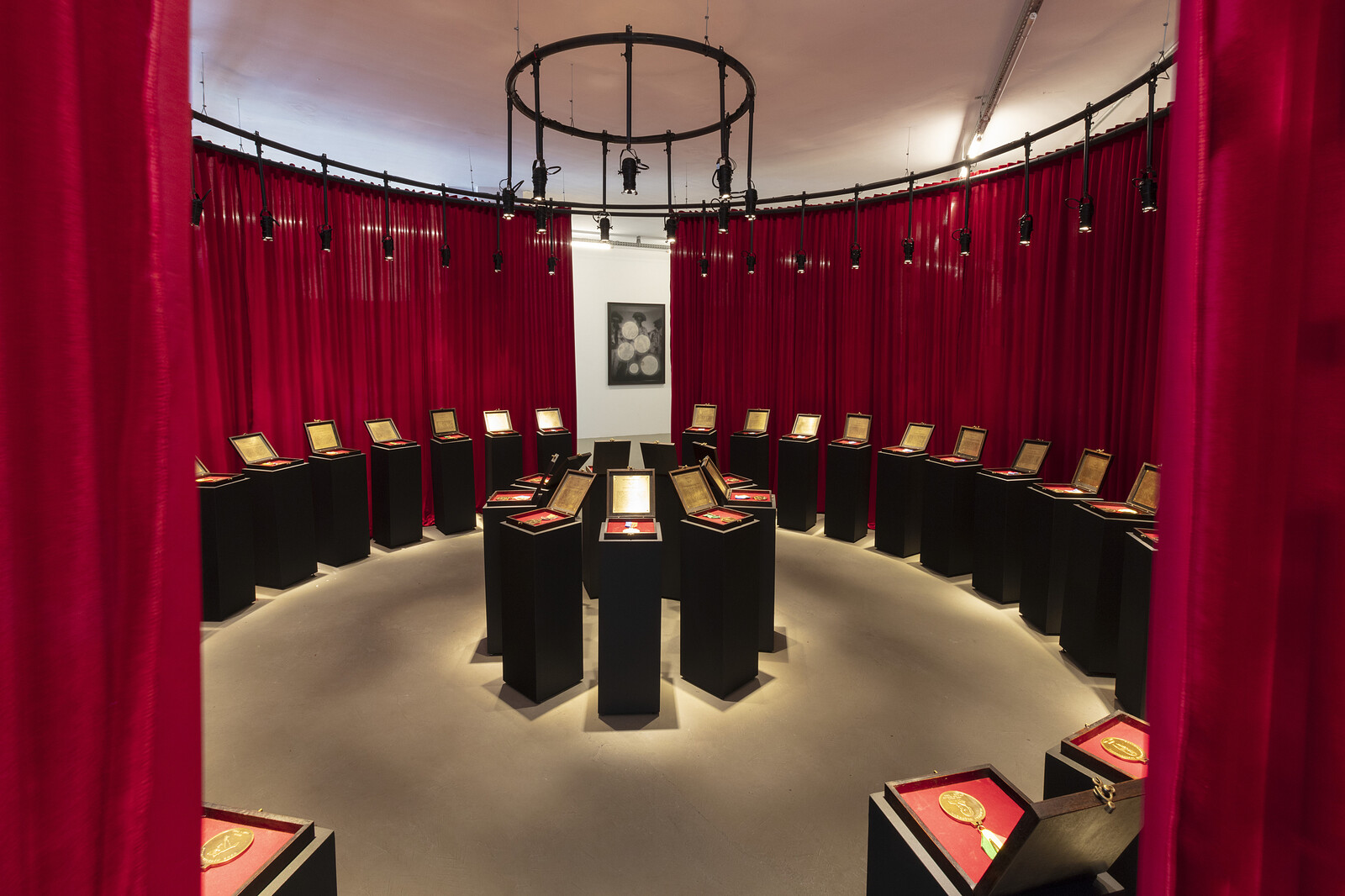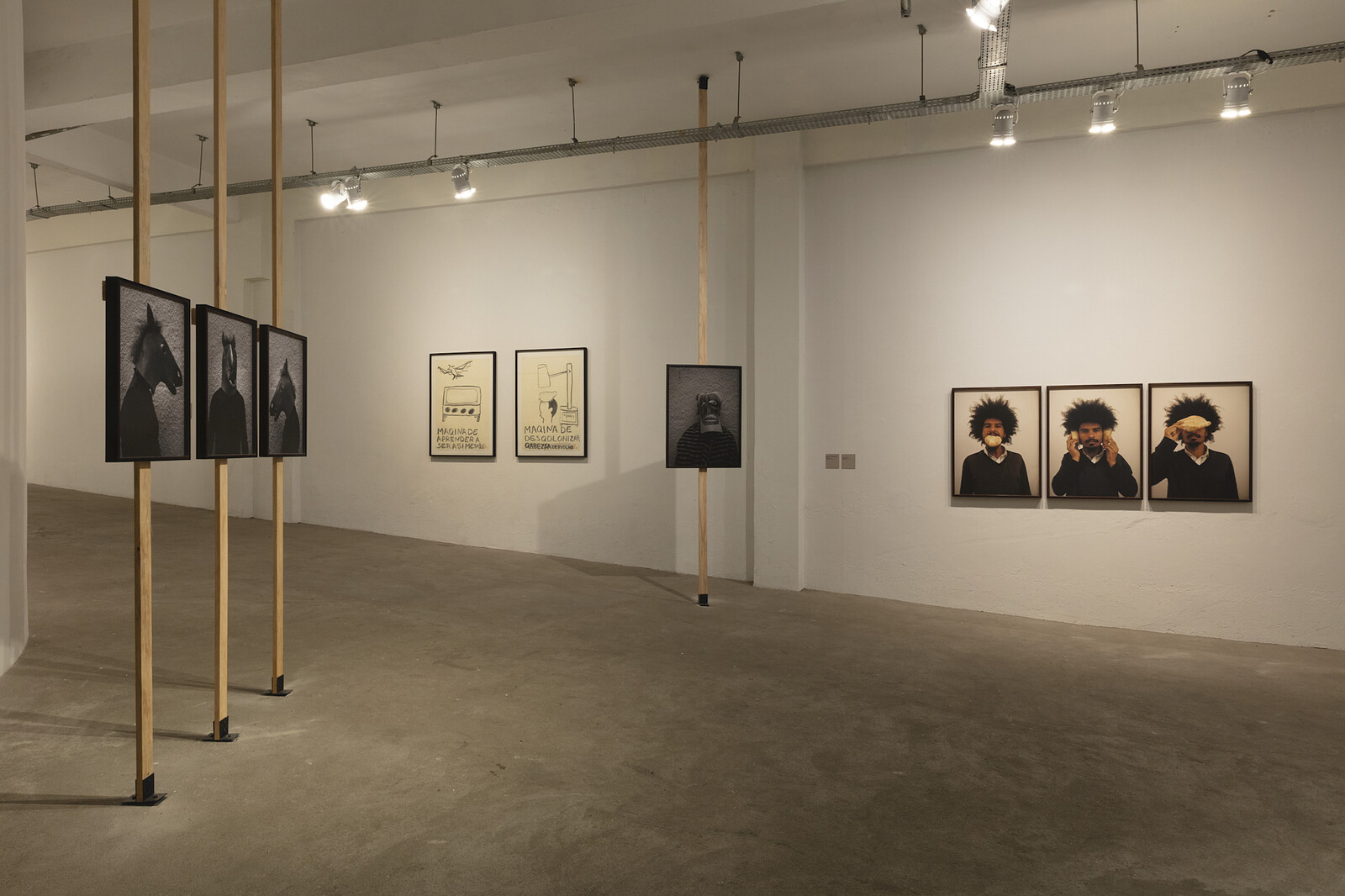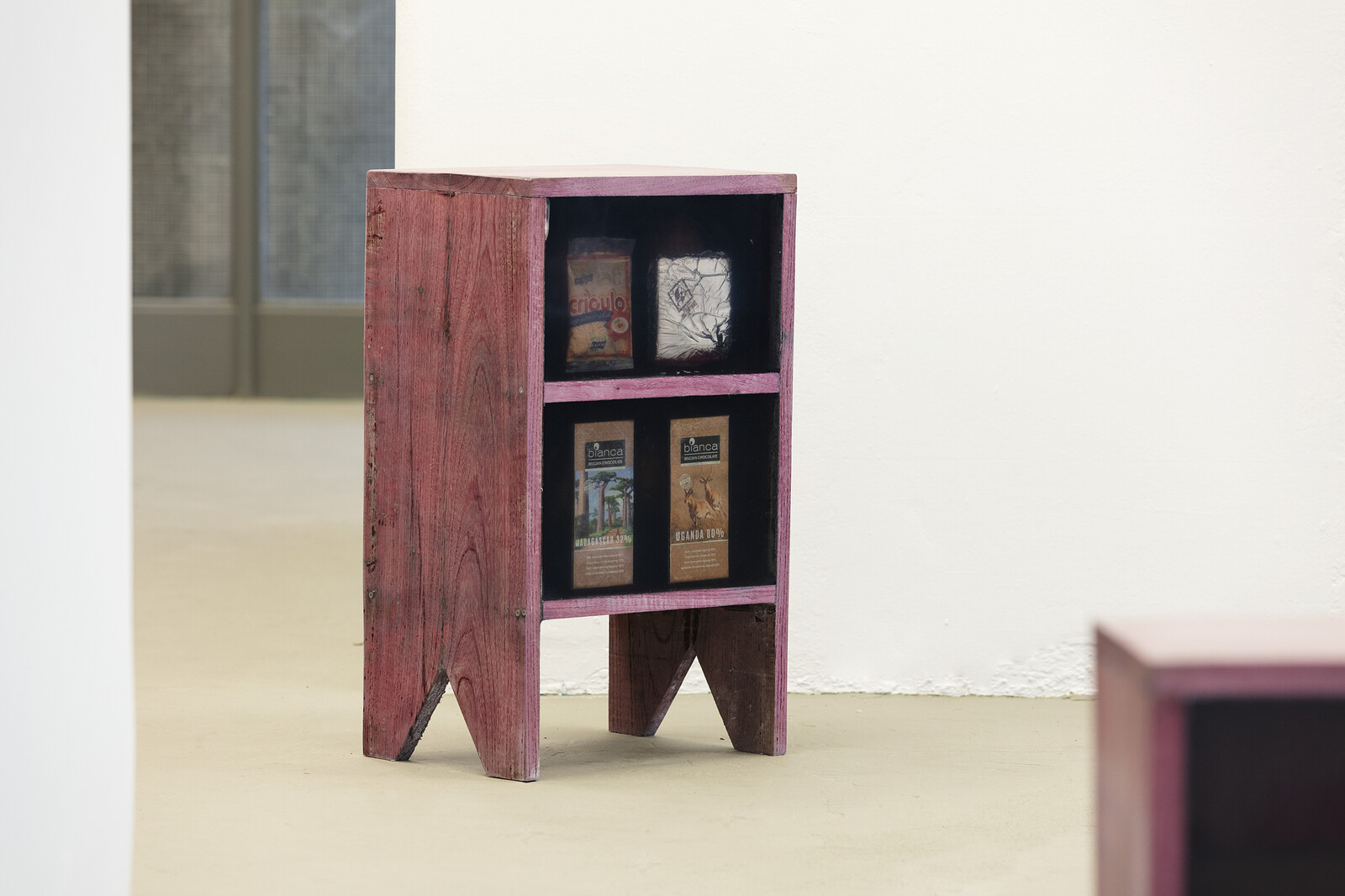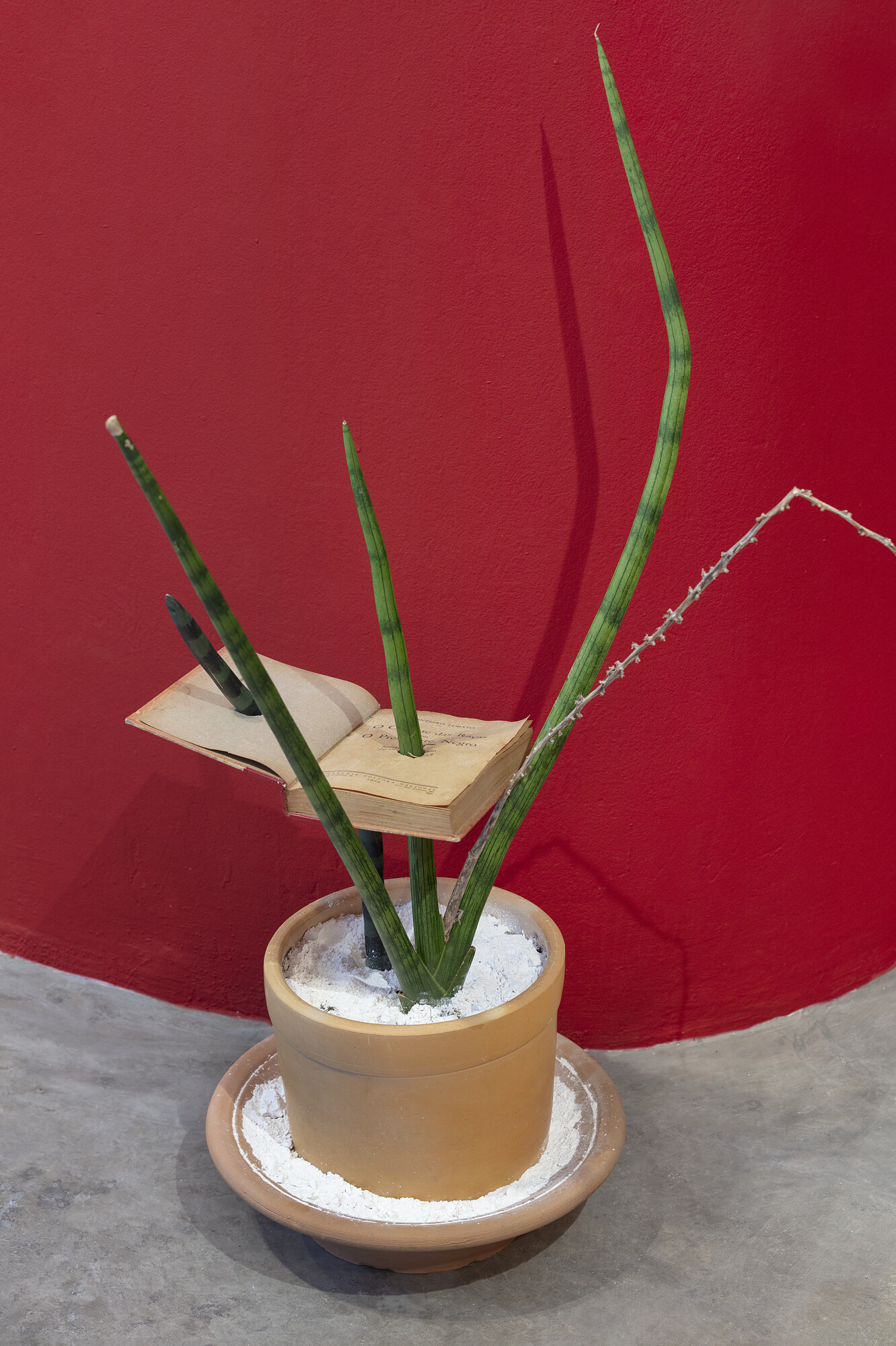I often stare open-mouthed at Brazilian supermarket shelves, horrified by the overt racism of some of the branding. One line of cleaning products features a caricature that’s too grim to go into, and would likely have been considered offensive by many as far back as the 1920s. There is a history to all this of course. While they number under half the population, white Brazilians still hold a disproportionate amount of the country’s wealth and power: a legacy of colonialism, slavery, extractionism, but also of the myth of Brazil’s post-racial utopia to which many in the country still cling (a multiculturalism partly due to the post-abolitionist government’s desire to “whiten” the population by inviting immigration from Europe and Asia in the late nineteenth century). That is a lot to unpack from the weekly shop.
Some of these dubiously branded products caught the eye of Brazilian artist Paulo Nazareth too, who uses them as the basis for his critique of the art world’s tendency to transform cultural identity into commercial capital. In his series “Ovo de Colombo” (Egg of Columbus, 2020), one of the first bodies of works encountered in this expansive retrospective of art made over 17 years, they have been sealed inside a resin egg and each placed on their own pedestal: packets of flour bearing dark-skinned people picking corn by hand; a bag of mate powder illustrated with an image of indigenous people apparently participating in the theft of their own land by clearing the forest for crops; a bottle of Imperio beer. The transparent encasements are also reminiscent of bell jars, rendering the products aesthetic curios to be mulled over.
The artist makes the same invitation with the many images of himself that feature in the show. In each, Nazareth plays with ideas of exoticization and commercialisation of his own Afro-Brazilian and Indigenous identity. In several nearby self-portraits, titled Objetos para tampar o Sol de seus olhos (Objects to Keep the Sun out of Your Eyes, 2010), Nazareth wears a different hat of woven palm. In other works he wears masks made of bread, like a faux-shamanic performance ritual (while probably unintentionally recalling Japanese artist Tatsumi Orimoto’s work); yet more images show the artist wearing paper masks scrawled with crude pseudo-tribal imagery, and plastic souvenir Jedi and Darth Vader masks from the Star Wars films. In the latter the symbology of white versus black—“the dark side”—is left implicit.
Further into the exhibition is a series of photographs from Noticias de América (2011–12), perhaps the artist’s best-known and most ambitious project. The framed color images are snapshots from his long journey over land to show at the Art Basel Miami, walking much of the way from his home state of Minas Gerais. To survive Nazareth was seemingly forced to take on various jobs (in one photo he is shown standing outside a diner, the Stars and Stripes fluttering on a flagpole, holding a cardboard sign which reads in English “I clean your bathroom for fair price”) before the final image shows him, eventually in Miami, next to a camper van from which a mountain of bananas tumble out. The artist, with some irony, holds yet another handwritten cardboard sign, presumably for the benefit of the art fair’s monied patrons: “My exotic image for sale.”
The tension of Nazareth’s identity—symbolic of both violence and fetishization—hangs over much of this presentation. As much as we see his body aestheticized, it is also subjected to degradation and assault. In the video Antropolgia do negro I (2014), the artist lies on the ground in a white vest, surrounded by human skulls which he piles on top of himself. Árvore do Esquecimento [L’Arbre D’Oublier] (2013) was a performance made by the artist at the “Tree of Forgetting” in Ouidah, Benin, around which enslaved people would historically walk to lose the memory of their freedom. In the video documentation shown here, Nazareth slowly walks backwards around the trunk, for hours on end, as if to reverse the spell. Such a video is probably hard to sell outside an institutional collection, but many of Nazareth’s objects and images are likely valuable commodities for collectors (and curators, etc) wishing to demonstrate their anti-racist credentials.
In a vitrine the artist shows various objects he has picked up on his epic walks—toy trucks from walking through Africa, an Arte Popular aeroplane made out of old plastic packaging—souvenirs of found labor that would look great on a chic coffee table. A series of paintings show Black figures fighting back against the police, a reversal of the violence meted out arbitrarily against bodies of color globally by state authorities (the exhibition’s title translates as “flying kick,” a reference perhaps to the Afro-Brazilian martial art of capoeira); yet the compositions have a deliberate cute charm to them. The truism that capitalism has the ability to turn every idea, every struggle, every image to product is burlesqued in another series of photographs showing various people Nazareth found along his travels wearing T-shirts bearing Alberto Korda’s iconic image of Che Guevara silhouetted. Those in the images aren’t European students, however, but ones from the Global South, for whom the emancipatory legacy of Guevara is something worth clinging on to.
Nazareth’s critique demonstrates how the culture industries are at the vanguard of hyper-commodification of anything and everything (in which movements like Black Lives Matter can be brought quickly and efficiently to a white gallery wall within months: the rush of Brazilian galleries to sign Black figurative painters in the last year being a case in point). He plays with—but not to—the market. In a pairing of photographs, taken from a walk tracing the slave routes across Africa, Nazareth is shown crouching next to locals outside buildings of corrugated roof. He and his new friends hold up signs in the colonial languages of English and French, which, in a challenge to the viewer, to art, ask: “What You Think?” and “What You Want?”

